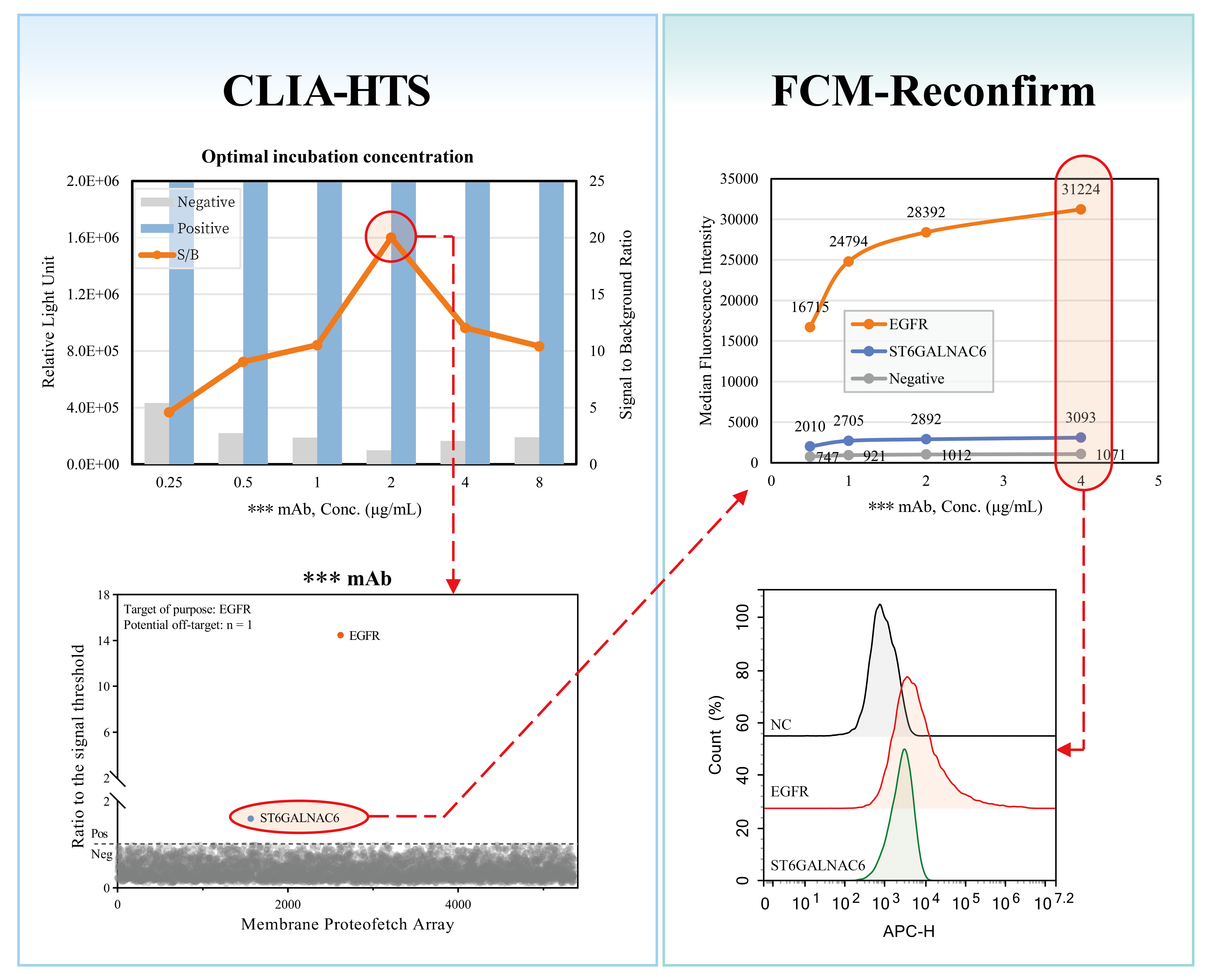-
Telephone:400-882-7987
-
wechat:15523376158wechat:15950040099

Specificity analysis of monoclonal antibody
In recent years, monoclonal antibody drugs including antibody-drug conjugate have been widely used in the treatment of various diseases, but serious clinical side effects caused by off-targets are also common. In the process of antibody drug development, the closer the candidate molecules are to the terminal detection, the higher the price for the development failure. We evaluate the therapeutic antibodies on the market and find that the off-target rate of Mabs is 16%. Through the analysis of its biological function combined with clinical manifestations, the strategy of new drugs should be adjusted in time to improve the safety of drugs.
Case 1: specificity analysis of Rituximab
Introduction: Rituximab is a human-mouse chimeric monoclonal antibody that specifically binds to the transmembrane antigen CD20 and is used in the treatment of chronic lymphoblastic leukemia (CLL), some types of non-Hodgkin's lymphoma (NHL) and some autoimmune diseases.
Specific process and data presentation:
1. The samples to be tested were selected to incubate with known target molecules at different concentrations, and the optimum screening concentration of the samples to be tested was confirmed by chemiluminescence detection.
2. Chemiluminescence detection was carried out with the cell array transfected with the whole plasmid bank to screen the suspected target proteins that had a binding relationship with the samples to be tested.
3.Incubation of 4 different concentration gradient flow detection for final confirmation.

Conclusion: No risk of off-target.
Case 2: Specificity analysis of monoclonal antibodies on the market
Introduction: A humanized monoclonal antibody drug used in the treatment of malignant tumor can competitively bind EGFR, prevent the binding of epidermal growth factor and its receptor, inhibit the proliferation of tumor cells and promote the apoptosis of tumor cells. In the treatment of Ⅲ / Ⅳ stage nasopharyngeal carcinoma and pancreatic cancer with positive expression of EGFR, the common side effects are fever, hypotension, nausea, dizziness, dry mouth, rash and so on.
Specific process and data presentation:
1. The samples to be tested were selected to incubate with known target molecules at different concentrations, and the optimum screening concentration of the samples to be tested was confirmed by chemiluminescence detection.
2. Chemiluminescence detection was carried out with the cell array transfected with the whole plasmid bank to screen the suspected target proteins that had a binding relationship with the samples to be tested.
3. Incubation of 4 different concentration gradient flow detection for final confirmation.

Conclusion:There is a risk of off-target.The weakly bound ST6GALNAC6 molecule is sialtransferase, and the clinical side effect of "dry mouth" is suspected to be related to the off-target of this molecule

